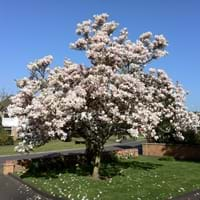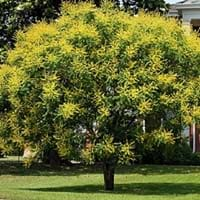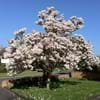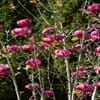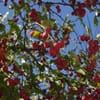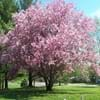Life Span
Perennial
Perennial
Origin
Hybrid origin
Southern Asia, Southeastern Asia, China
Types
Gwillimia, Manglietia, Kmeria
Not Available
Number of Varieties
Not Available
Habitat
Subtropical climates, Tropical regions
Deciduous forests, Subtropical climates, Tropical regions
USDA Hardiness Zone
6-9
10-13
Sunset Zone
Not Available
H1, H2
Habit
Oval or Rounded
Oval or Rounded
Flower Color
Purple, Pink, Light Pink, Rose
Pink, Light Pink, Lavender, Blue Violet
Flower Color Modifier
Bicolor
Bicolor
Fruit Color
Brown
Sandy Brown, Chocolate
Leaf Color in Spring
Green
Green, Light Green
Leaf Color in Summer
Green
Green
Leaf Color in Fall
Green, Yellow green, Sandy Brown
Red, Green, Copper
Leaf Color in Winter
Not Available
Red, Copper
Leaf Shape
Ovate
Oval to egg shaped
Plant Season
Spring, Summer
Spring, Summer, Fall
Sunlight
Full Sun, Partial Sun
Full Sun, Partial Sun
Type of Soil
Clay, Loam, Sand
Loam, Sand
The pH of Soil
Acidic, Neutral
Acidic, Neutral
Soil Drainage
Well drained
Average
Bloom Time
Spring, Late Spring
Spring, Late Spring, Early Summer, Summer, Late Summer, Early Fall, Fall
Tolerances
Not Available
Wet Site
Where to Plant?
Ground
Ground
How to Plant?
Seedlings, Transplanting
Seedlings, Spores
Plant Maintenance
Medium
Low
Watering Requirements
Prefer drip-irrigation instead of Over-head watering
Average Water Needs
In Summer
Lots of watering
Lots of watering
In Spring
Moderate
Moderate
In Winter
Average Water
Average Water
Soil pH
Acidic, Neutral
Acidic, Neutral
Soil Type
Clay, Loam, Sand
Loam, Sand
Soil Drainage Capacity
Well drained
Average
Sun Exposure
Full Sun, Partial Sun
Full Sun, Partial Sun
Pruning
Prune if you want to improve plant shape
Dispose of diseased portions, Prune before Winter, Prune for shortening long shoots
Fertilizers
Fertilize in late fall, fertilize in spring, Requires high amount of nitrogen
Apply 10-10-10 amount, as it is a flowering plant, use high phosphorous content fertilizer
Pests and Diseases
Aphids, Bacterial Blight, Canker, Crown gall, Hoplia beetle, Leaf burn, Leaf spot, Mealybugs, Powdery mildew, Red blotch, Scorch, Soft scales, Thripes, Wetwood
Aphids, Bacteria wilt, Downy mildew
Plant Tolerance
Not Available
Heat Tolerance, Shade areas, Shallow soil, Soil Compaction
Flower Petal Number
Single
Single
Foliage Texture
Coarse
Coarse
Foliage Sheen
Matte
Glossy
Attracts
Not Available
Birds, Butterflies, Hummingbirds
Allergy
Not Available
allergic conjunctivitis, Anxiety, Red eyes, sneezing, Sore eyes
Aesthetic Uses
Showy Purposes
Bouquets, Cottage Garden, Showy Purposes
Beauty Benefits
Treatment of Dark Spots
For treating wrinkles, Hair Conditioner, Making cosmetics
Edible Uses
Yes
Sometimes
Environmental Uses
Air purification
Air purification, Prevent Soil Erosion, Shadow Tree
Medicinal Uses
Alzheimer’s Disease, Anxiety, Cancer, Digestion problems, Liver problems, Menstrual Cramps, Respiratory Disorders, Weight loss
Detoxification, Hormonal Balancing, Liver problems, Obesity, Regulates Blood Sugar
Part of Plant Used
Whole plant
Leaves
Other Uses
Used as Ornamental plant, Used for its medicinal properties
Biomass for fuel, Can be made into a herbal tea, Cosmetics, Making Sweet Scented Oil
Used As Indoor Plant
Yes
No
Used As Outdoor Plant
Yes
Yes
Garden Design
Feature Plant, Foundation, Shade Trees
Feature Plant, Shade Trees, Street Trees
Botanical Name
MAGNOLIA 'Alexandria'
LAGERSTROEMIA speciosa
Common Name
Alexandria Magnolia, Magnolia
Pride-of-India, Queen's crape-myrtle,
In German
Magnolienbaum
Königinblume
In French
magnolia
lilas des Indes, Lagerstroemia speciosa
In Spanish
árbol de magnolia
Banabá Plant
In Greek
Magnolia δέντρο
Lagerstroemia speciosa
In Portuguese
magnólia
Resedá-gigante
In Polish
magnolia drzewa
Lagerstremia wspaniała
In Latin
Magnolia lignum
Lagerstroemia speciosa
Phylum
Magnoliophyta
Magnoliophyta
Class
Magnoliopsida
Magnoliopsida
Order
Magnoliales
Myrtales
Family
Magnoliaceae
Lythraceae
Genus
Magnolia
Lagerstroemia
Clade
Angiosperms, Magnoliids
Angiosperms, Rosids
Tribe
Not Available
Not Available
Subfamily
Not Available
Not Available
Number of Species
Not Available
Importance of Magnolia Tree and Pride of India
Want to have the most appropriate plant for your garden? You might want to know the importance of Magnolia Tree and Pride of India. Basically, these two plants vary in many aspects. Compare Magnolia Tree and Pride of India as they differ in many characteristics such as their life, care, benefits, facts, etc. Every gardener must at least have the slightest clue about the plants he wants to plant in his garden. Compare their benefits, which differ in many ways like facts and uses. The medicinal use of Magnolia Tree is Alzheimer’s Disease, Anxiety, Cancer, Digestion problems, Liver problems, Menstrual Cramps, Respiratory Disorders and Weight loss whereas of Pride of India is Detoxification, Hormonal Balancing, Liver problems, Obesity and Regulates Blood Sugar. Magnolia Tree has beauty benefits as follows: Treatment of Dark Spots while Pride of India has beauty benefits as follows: Treatment of Dark Spots.
Compare Facts of Magnolia Tree vs Pride of India
How to choose the best garden plant for your garden depending upon its facts? Here garden plant comparison will help you to solve this query. Compare the facts of Magnolia Tree vs Pride of India and know which one to choose. As garden plants have benefits and other uses, allergy is also a major drawback of plants for some people. Allergic reactions of Magnolia Tree are Not Available whereas of Pride of India have allergic conjunctivitis, Anxiety, Red eyes, sneezing and Sore eyes respectively. Having a fruit bearing plant in your garden can be a plus point of your garden. Magnolia Tree has no showy fruits and Pride of India has no showy fruits. Also Magnolia Tree is not flowering and Pride of India is not flowering . You can compare Magnolia Tree and Pride of India facts and facts of other plants too.
